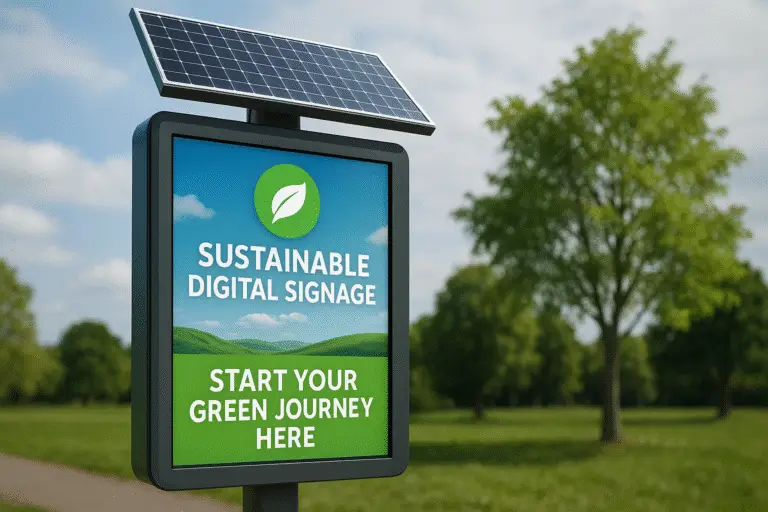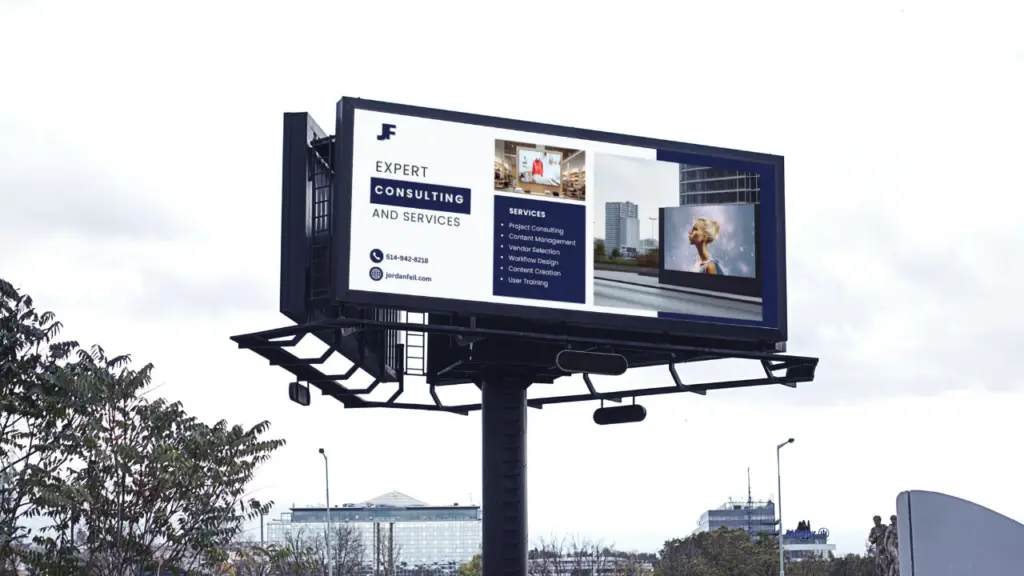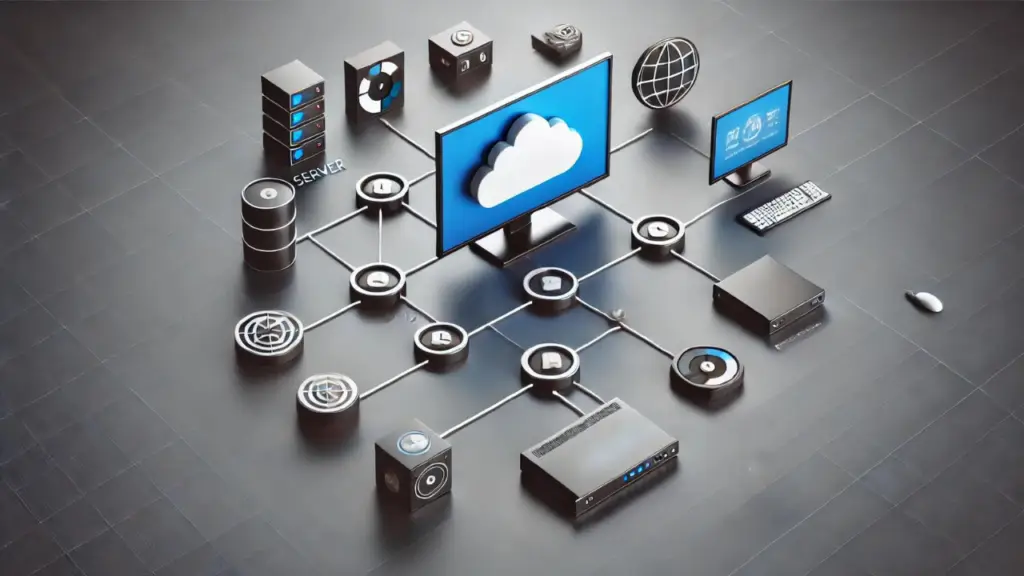Sustainable digital signage is no longer just a trend. It’s becoming a must for any business using screens to communicate, advertise, or engage. With growing concerns about energy use and environmental impact, companies are asking a smart question: How can we go greener without sacrificing quality or visibility?
The answer? You don’t have to choose.
In this post, we’ll walk through simple, practical ways to make your digital signage more sustainable. From low-power hardware to efficient content strategies, you’ll learn how to reduce waste and energy use. While still creating displays that look great and get results.
What is Sustainable Digital Signage?
Sustainable digital signage means choosing displays that use less power, last longer, and create less waste. Look for energy-efficient models with certifications like EPEAT or Energy Star, and consider displays with built-in media players to reduce extra hardware. Smart scheduling features can also cut energy use by turning screens off during off-hours. And when screens reach end-of-life, recycling through certified e-waste programs helps keep them out of landfills.
Why Sustainable Digital Signage Matters
Digital signs use a lot of resources. They need electricity to stay on all day, and they’re made with materials that can be harmful if not handled properly when thrown away. Here’s why making your digital signs more eco-friendly is important:
Benefits of Sustainable Digital Signage:
- Helps the Environment: Uses less energy and creates less waste
- Saves Money: Lower electricity bills and fewer replacement costs
- Attracts Customers: Many shoppers prefer businesses that care about the planet
- Follows Rules: Many places now have laws about energy use and recycling
- Future-Proofs Your Business: Staying ahead of environmental regulations
- Creates a Positive Image: Shows that your company cares about more than just profits
A coffee shop that uses energy-saving digital menu boards might save hundreds of dollars each year on electricity while also showing customers they care about the environment.

Easy Ways to Make Your Digital Signage More Sustainable
You don’t need to replace everything at once to be more eco-friendly. Here are simple steps any business can take:
1. Choose Energy-Saving Screens
Modern screens use much less power than older models while still looking bright and colorful.
- LED Screens: These use up to 70% less energy than older types
- Smart Brightness: Screens that automatically get dimmer or brighter based on the room light
- Look for Labels: Choose screens with energy-saving certifications like ENERGY STAR
- Turn Off When Not Needed: Set screens to turn off automatically during closed hours
A retail store might program its digital signs to turn off automatically at closing time and turn back on when the first employees arrive in the morning.
2. Use Cloud-Based Systems
Moving your digital sign management to the cloud (internet-based systems) can help the environment.
- Fewer Devices: No need for extra computers at each location
- Remote Updates: Change content without driving to each screen
- Less Equipment: Fewer devices means less electronic waste
- Easier Upgrades: Update software without replacing hardware
A restaurant chain could update menus across 50 locations instantly from one office computer instead of sending staff to each restaurant.
3. Make Equipment Last Longer
The longer your digital signs last, the less waste they create.
- Regular Maintenance: Clean and check equipment to prevent problems
- Software Updates: Keep systems current without buying new hardware
- Repair Don’t Replace: Fix screens when possible instead of throwing them away
- Choose Quality: Invest in better equipment that will last longer
A hotel might keep its lobby information screen working well for 7-8 years instead of 3-4 years just by doing regular maintenance and updates.
4. Consider Solar Power
For outdoor digital signs, the sun can provide free, clean energy.
- Solar Panels: Connect screens to solar power systems
- Battery Storage: Save extra energy for cloudy days or nighttime
- Hybrid Systems: Use solar when available and regular power as backup
- Energy Monitoring: Track how much power you’re saving
A highway billboard powered by solar panels could run for years with almost no electricity costs while producing zero pollution.

New Technology Making Digital Signs Greener
Exciting new technologies are making digital signs more earth-friendly than ever before:
1. All-in-One Displays (System on Chip Displays)
These smart screens have everything built in.
- No Extra Boxes: The computer is built right into the screen
- Less Wiring: Fewer cables means less material waste
- Lower Power Use: One device uses less electricity than multiple devices
- Simpler Setup: Easier to install and maintain
A doctor’s office might use all-in-one displays in waiting rooms to show health information without needing separate media players hidden behind each screen.
2. E-Paper Displays
These special screens work like e-readers and use almost no power.
- Tiny Energy Needs: Only uses power when the image changes
- Works in Sunlight: No need for bright backlighting outdoors
- Perfect for Some Uses: Great for price tags, meeting room signs, and information boards
- Long Battery Life: Can run for months on a single charge
A grocery store might use e-paper price tags that can be updated instantly across the store while only needing battery changes once a year.
3. Smart Systems with AI
Artificial intelligence can make digital signs much more efficient.
- Traffic Sensing: Screens that know when people are nearby
- Automatic Dimming: Adjusts brightness based on time of day
- Power Management: Turns off parts of the system when not needed
- Predictive Maintenance: Fixes problems before they cause failures
A mall directory might use AI to brighten when shoppers approach and dim when nobody is nearby, saving power throughout the day.
Green Technology Decision Matrix
| Technology | Energy Efficiency | Cost | Lifesan | Environmental Impact | Best Use Case |
|---|---|---|---|---|---|
| MicroLED | ⭐⭐⭐⭐⭐ | $$$ | 10+ years | Minimal | Large formats |
| E-Paper | ⭐⭐⭐⭐⭐ | $$ | 5+ years | Very Low | Static content |
| OLED | ⭐⭐⭐⭐ | $$$ | 7+ years | Low | Indoor displays |
| LCD with LED | ⭐⭐⭐ | $$ | 5+ years | Moderate | General use |
| Traditional LCD | ⭐⭐ | $ | 3+ years | Higher | Budget options |

Choosing the Right Green Technology
Not all eco-friendly options work for every situation. Here’s a simple guide to help you choose:
Best Green Technologies for Different Needs:
- Outdoor Large Screens: MicroLED with solar power backup
- Indoor Retail: Energy-efficient OLED or LED displays with motion sensors
- Price Tags/Small Info: E-paper displays
- Office Settings: All-in-one displays with power management
- Restaurants: Energy-efficient LED screens with scheduled on/off times
A shopping mall might use different types of green digital signage throughout the building. E-paper for store directories, energy-efficient LEDs for main hallways, and motion-activated displays near entrances.
Book a free consultation today
Measuring Your Environmental Impact
How do you know if your digital signage is truly sustainable? Here’s what to measure:
- Energy Consumption: Compare before and after upgrades
- Carbon Footprint: Calculate emissions from your signage network
- Waste Reduction: Track how much less electronic waste you produce
- Product Lifecycle: Monitor how long equipment lasts before needing replacement
- Return on Investment: Calculate money saved through energy efficiency
Sustainable Digital Signage Checklist
Use this simple checklist to evaluate how green your digital signage is:
- Our screens have energy-saving features
- We turn displays off when not needed
- We use remote management to reduce travel
- We have a plan for recycling old equipment
- We consider energy use when creating content
- Our suppliers have sustainability programs
- We measure and track our energy consumption
- Our team is trained on eco-friendly practices
- We have goals for improving sustainability
- We share our green efforts with customers
Challenges of Going Green with Digital Signage
Making digital signage hardware more sustainable isn’t always easy. Here are some common challenges and how to overcome them:
1. Higher Starting Costs
Eco-friendly equipment often costs more upfront but saves money over time.
- Solution: Calculate the total cost over 5 years, including energy savings
- Look for Incentives: Many governments offer tax breaks for green technology
- Start Small: Upgrade one area at a time, beginning with the most visible or energy-hungry screens
2. Finding the Right Technology
Not all green options work for every business need.
- Solution: Test different technologies in small areas before full rollout
- Ask for Demos: Most suppliers will let you try before you buy
- Visit Other Installations: See how similar businesses use sustainable options
3. Training Your Team
New systems require new skills.
- Solution: Include training when purchasing new equipment
- Create Simple Guides: Make easy-to-follow instructions for daily operations
- Designate Champions: Have team members who become experts and can help others

Getting Started with Sustainable Digital Signage: A Step-by-Step Plan
So you’re ready to embrace sustainable digital signage. Great move! Not just for the planet, but for your bottom line, too. Here’s how to get started without getting overwhelmed.
1. Check What You’ve Got
Before you invest in anything new, take stock of your current setup.
-
Energy use: How much power are your screens pulling daily? High energy consumption = high costs.
-
Equipment age: Older displays tend to be less efficient. If they’re over 5–7 years old, they’re likely due for an upgrade.
-
Content type: Video and animations use more power than static images. Is your content working with your sustainability goals?
-
Location factors: Screens in sunny spots, high-traffic areas, or hot environments may need extra energy to stay visible and functional.
2. Set Clear Sustainability Goals
Start with realistic targets, and grow from there.
-
Short-term (next 6 months): Swap out your worst energy hogs with efficient models (look for ENERGY STAR-rated or LED options).
-
Medium-term (1–2 years): Cut total signage energy use by 25%. Launch an e-waste recycling program for your old gear.
-
Long-term (3–5 years): Power half your signage network with renewable energy. Aim for zero waste from signage operations.
3. Choose the Right Partners
Not all vendors walk the talk. Choose those who do.
-
Research vendors with a proven commitment to sustainability.
-
Ask smart questions: What’s the product lifespan? Do they offer recycling or take-back programs?
-
Check reviews: Real feedback from other businesses can reveal the truth behind green claims.
-
Request case studies: Ask to see real-world examples of sustainable signage projects.
4. Track and Celebrate Your Progress
What gets measured, gets improved.
-
Install energy monitors to track consumption and show actual savings.
-
Review your progress every few months. Adjust goals if needed.
-
Share the wins with your team, stakeholders, or even customers. A little recognition goes a long way.
Future Trends in Sustainable Digital Signage
The push for greener tech isn’t slowing down, and green digital signage is right at the center of it. Here’s a look at where things are headed:
1. MicroLED: Big Efficiency in a Tiny Package
MicroLED displays are the next big leap in digital signage technology. Think better performance with way less waste.
-
Lower energy use: MicroLED screens sip power, cutting energy costs dramatically.
-
Ultra-long lifespan: Some models are rated for over 100,000 hours. That’s more than 11 years of non-stop operation.
-
Superior visuals: Crisp contrast, vibrant colors, and deeper blacks, all with reduced power draw.
-
Flexible design: These screens can be built into curves, columns, and custom shapes to fit unique spaces.
2. Circular Economy Comes to Digital Signage
Forget one-and-done hardware. The industry is shifting toward keeping materials in play longer.
-
Take-back programs: Manufacturers are collecting used screens for parts and recycling.
-
Modular designs: Replace a single component instead of tossing the whole screen.
-
Recycled materials: New displays increasingly include post-consumer plastic and metal.
-
Refurbishment: Old screens get new life with professional restoration and updated tech.
3. Smarter Cities, Smarter Signs
Tomorrow’s cities will be connected, and your digital signage will play a big role.
-
Solar-powered displays: Signage that generates its own energy while delivering real-time content.
-
Emergency-ready: Screens that switch from ads to alerts during weather events or emergencies.
-
Community tools: Green signage that shows transit updates, air quality, or neighborhood announcements.
-
Urban integration: Signage designed as part of broader sustainability efforts like smart transit hubs or green infrastructure.

Conclusions
Making your digital signage more sustainable isn’t just a hot trend, it’s a smart business move. By cutting energy use, reducing waste, and showing your commitment to sustainability, you can:
-
Lower your energy bills and reduce long-term operating costs
-
Win over eco-conscious customers and partners
-
Get ahead of stricter environmental regulations
-
Strengthen your brand’s reputation for doing the right thing
-
Future-proof your signage as technology and expectations evolve
And here’s the even better news: sustainable digital signage technology is improving fast. It’s more powerful, more flexible, and more affordable than ever. Whether you’re just starting your signage journey or looking to upgrade your existing network, there’s never been a better time to make the switch.
FAQ
What is sustainable digital signage?
Sustainable digital signage refers to display systems designed with energy efficiency, longevity, and environmentally friendly materials in mind. It minimizes power use and supports responsible hardware lifecycle practices.
How can businesses reduce the energy consumption of digital signage?
Businesses can reduce energy use by choosing energy-efficient displays, using scheduling software to turn screens off after hours, dimming brightness based on ambient light, and selecting devices certified for low power consumption.
Why is sustainable digital signage important for businesses?
Sustainable signage helps businesses lower energy costs, reduce carbon emissions, and meet ESG goals. It also demonstrates a commitment to environmental responsibility, which can boost brand reputation.


